Michael Smith Gallery
About the Wounaan and their Baskets
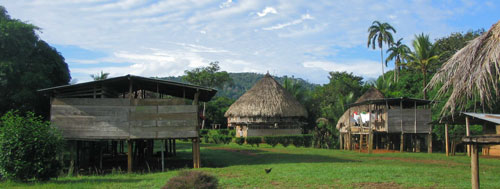
The Wounaan and Emberá Indians inhabit one of the world’s last untouched rainforests in Panamá. The Darién wilderness is mostly without roads or electricity. While the men hunt, fish, and farm, the women weave some of the technically finest and most beautiful baskets ever before seen. The purchase of this unique basket provides direct income to these remote indigenous tribes, and enables them to continue their traditional culture, and withstand the pressures of the encroaching modern world.
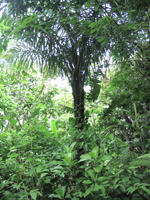
To weaver a basket, we need only two native plant fibers as threads and coils, and a modern sewing needle. However, to prepare these materials is a lengthy process.
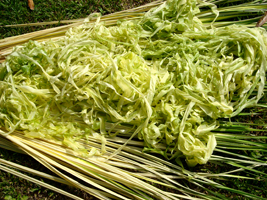
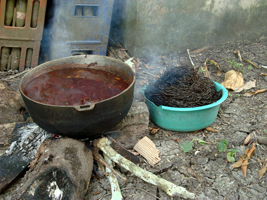
The “thread” fiber is obtained from wild Chunga palm leaves and colorfully dyed with extracts of plant leaves, bark and mud. First, skin off the membrane part of the leaves, roughly split into threads. Dry them under the sun and then cook them with plant juices to dye the threads.
The “coil” fiber is call nahuala which is the material to make Panama hat. A dried strain of nahuala fiber is as thick as a spagetti noodle. The weaver needs a bundle of nahuala to be the coil for the basket.
Before weaving the basket, the weaver dries and dyes the Chunga palm leaves and splits them into thread.
Before any weaving starts, the weaver must prepare the materials and dye enough threads to finish the basket. A big basket such as 15 inch in diameter can take 18 months to weave but it can take up to 3 months to prepare all materials.
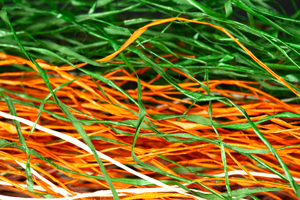
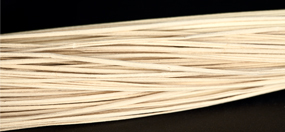
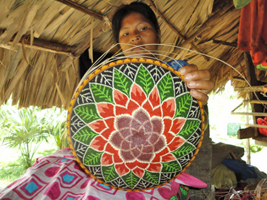
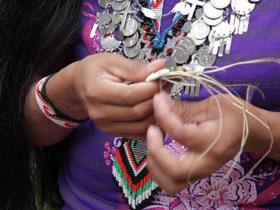
The weaver starts a basket by tying a knot with a bundle of nahuala fibers. She stitches around the knot with a needle and Chunga thread to create the bottom center of the basket. As she coils the bundles around the knot, she secures the coil by sewing the thread around the coil to a stitch of the previous coil. She continues this spiraling and stitching technique to create the basket. By using different colors of thread she creates a design on the basket.
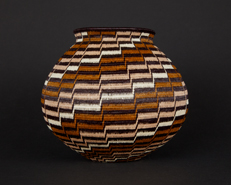
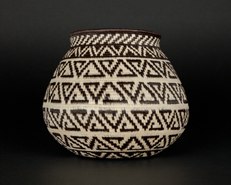
The earliest baskets were black and white. The design was borrowed from their body painting pattern. As the Wounaan learned how to dye the palm leaves with more plants and bark, the colorful cultural patterns were seen.
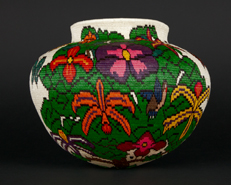

While the Wounaan excel their technical skills at weaving finer baskets, they also excel their artistic skills to weave more complex rainforest designs such as flowers, hummingbirds, butterflies, parrots, toucans, jaguar tracks and bats.
Some master weavers weave large non-repetitive jungle scene baskets that can take a year or two to complete. Some just weave miniatures.
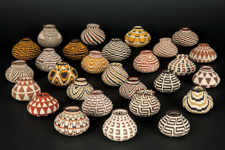
In general, you will find higher stitch count in smaller baskets. The big basket stitch count is about 300 to 400 stitches per square inch vs the smaller ones can have about 600 to 1000. To achieve a finer or higher stitch count basket, the weaver not only split the thread thinner but also use a smaller bundle of nahuala fibers.
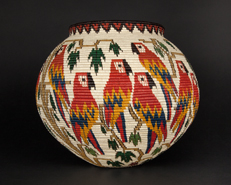
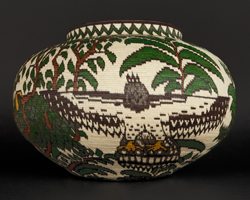
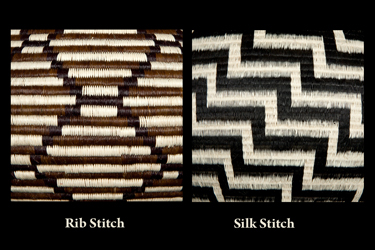
There are also two types of stitches: rib or silk. To create a rib stitch, the needle goes through the top of the coil. The silk stitch is produced by putting the needle in the middle of the coil. As a result, the rib stitches show a distinct ridge on the basket. If you touch a rib stitched basket, you will feel the coils vs a smooth or “silky” feel in a silk stitched basket. Weavers and collectors have no special preferences on one over the other.

The Wounaan and Emberá Indians are facing their toughest problem—deforestation by outsiders. Guns and violence is threatening the lives of these indigenous Indians. Note that most our weavers do not live in the comarca. They have no right on the land they are living now. Native Future is a non-profit organization formed by volunteers to help the Wounaan with education and land-right issues. If you would like to help or to know more, please contact Native Future.